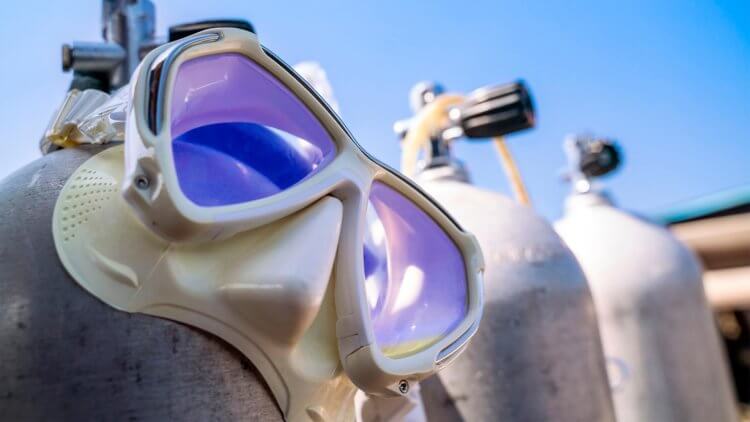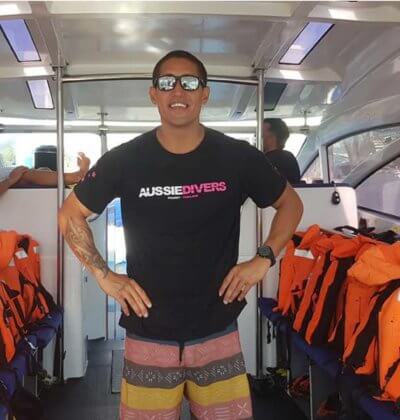IDC Physiology Exam Tips – Understanding Ears
Ears
IDC Physiology Exam Tips as problems with the ears is one of the most common injuries you will face as a scuba diving instructor. General soreness may occur in a lot of new scuba divers as they get used to equalizing. Students or unexperienced divers equalizing to forcefully will be one of the most common injury and instructor will face.
They say the problem with ears can occur as shallow as one metre. This means that a student could possibly have issues whilst doing to confined water session. Caution needs to be taken in the shallowest of water.
What can further enhance this issue is that there is no physical way of teaching a student to equalize nor any way of knowing when I student should be equalizing or has equalized properly.
Quite a large number of open water students will get some sort of discomfort after initial dives as they learn to equalize properly. Any discomfort should be noted and taken seriously.
Instructors should take particular care in descending with not only new students but all divers. Instructors are a lot better at knowing when and how to equalize, are more relaxed in the water and can use several different techniques to equalize. With instructors diving each day they can descend faster than the average divers. Students and recreational divers who try to keep up the same descent rate as an instructor can fail to equalize and do serious damage to their ears.
Having a good understanding of ear problems, the cause and effect of ear issues will make you a lot safer dive instructor.
**With ALL ear injuries or suspected injuries, scuba diving must stop!**
For the purpose of scuba diving the ear has been broken down into three sections.
Sections of the Ears
Inner Ear
The inner ear includes semicircular canals, cochlea and the round window.
Inner Ear Barotrauma: This injury generally occurs when divers delay equalization during descent and then attempts to forcefully equalize their ears. This “hard” blowing over-pressurizes the middle ear and can result in implosive or explosive damage to the round and oval windows. **EXAM TOPIC**
Signs & Symptoms: Vertigo, vomiting, hearing loss, loud tinnitus (a ringing or roaring sound in the ear).
Middle Ear
The middle ear includes ear drum, oval window and eustachian tube.
The middle ear is most effected by pressure changes **EXAM TOPIC**
Middle Ear Barotrauma: This is by far the most frequently reported injury among divers. People with middle ear barotrauma generally develop symptoms immediately following the dive. However, delays of up to one day or longer have been reported. When the diver descends, the pressure can cause injury to the middle ear. This overpressure of the middle ear can cause serious fluid and blood to leak into the middle ear, partially or completely filling it. This fluid can often be mistaken for water and a diver may just think they have water in their ears.
Signs & Symptoms: A feeling of fullness in the ear may develop, like the feeling of fluid inside the ear. Muffled hearing or hearing loss are other indications of middle ear barotrauma.
Outer Ear
The outer take in the ear canal and the actual ear itself (Pinna)
For the purpose of your exams PADI would like you to know the difference between inner, middle and outer ears as well as the following parts of the ear:
Parts of the Ear
Ear Canal
Is the part of the ear that is exposed to the water and stops at the air drum. Some infections (swimmer’s ear) can occur in the outer ear due to failing to since the ear of fresh water after scuba diving. Always have you students rinse the ear with fresh water after a scuba dive. Not likely to feature in PADI Exams.
Ear Drum
The ear drum separates the outer ear from the middle ear. The biggest concern and the most common injury is rupturing or perforation to the ear drum.
Barotraumatic injuries to the ear may result in perforation or rupture of the ear drum. This may occur in as little as 2.1 meters of water.
The two most common reasons for this is equalizing two forcefully or failing to equalize at all.
Symptoms of Ear Drum Rupture According to PADI and DAN
PADI
When the eardrum ruptures the diver experiences sharp pain followed by immediate relief as the break admits water instantly equalizing the ear space. Since the water is colder than normal body temperature it can cause vertigo. **EXAM TOPIC**
DAN
Generally there is pain and bleeding from the ear. This may not always be the case, as a number of dive-related ear drum ruptures have reported no pain at all. Hearing loss and tinnitus may also be present, but not always. A discharge from the ear of commingled fluid and blood may be a sign of ear drum rupture.
Oval Window
The most common ear barotrauma is the middle ear. This includes the eardrum and the space behind it.
Inner Ear Barotrauma: This injury generally occurs when divers attempt to forcefully equalize their ears. This “hard” blowing over-pressurizes the middle ear and can result in implosive or explosive damage to the round and oval windows.
Round Window
A part of the inner ear. As mentioned earlier, can be the subject of round window rupture also known as inner ear barotrauma. Caused be delaying equalization and then forcefully equalizing. **EXAM TOPIC**
Eustachian Tube
The eustachian tube is a canal that connects the middle ear to the upper throat and the back of the nasal cavity. It controls the pressure within the middle ear, making it equal with the air pressure outside the body. This tube is what we use to equalize. **EXAM TOPIC**
Cochlea
The cochlea is a hollow, spiral-shaped bone found in the inner ear that plays a key role in the sense of hearing.
Summary
IDC Physiology Exam Tips – Ear injuries are the most commonly encountered injuries to divers. Permanent hearing loss may result from barotrauma to the ears. The likelihood of injuries is reduced by preventive measures such as:
Properly equalizing
Never diving with a cold or other congestion,
And abstaining from diving if you cannot clear your ears.
Several types of ear injuries can occur. All of these injuries should be examined by a qualified medical practitioner.
Typical PADI questions would be
The ________ ear is the most effected by pressure or changes in pressure.
A(n) ________ may occur if a diver who is having difficulty equalizing blows to forcefully against a pinched nose.
A diver who ruptures an ear drum while in cold water may experience _______ as the water comes into contact with the vestibular canals.
If why descending a diver is having difficulty equalizing his ears and he forcefully blows against a pinched nose, he may risk.
A ruptured ear drum may immediately cause _______ underwater and may also lead to infection due to water entering the __________
Check out this link by DAN about ear injuries. DAN Common Ear Injuries
Posted in Instructor Pro IDC Tips on .





